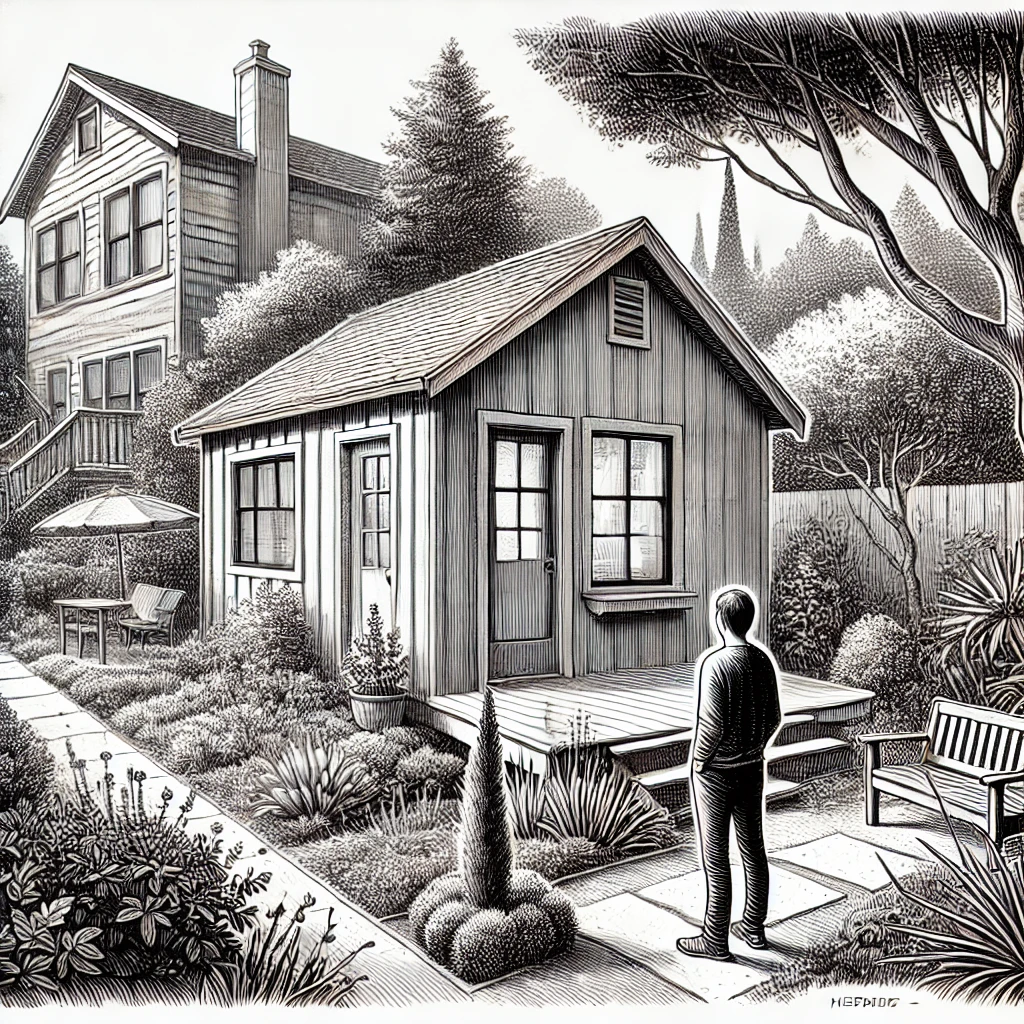The question of using an ADU as a primary residence has a lot of nuance attached to it.
If you’re the owner of the lot and want to spend most of your time in your ADU (presumably detached), then this is possible – regulation-dependent – and would be classed as using your ADU as your primary residence.
In other cases, like in California, you can now sell ADUs separately in some areas, which would allow ADUs to be used as primary residences.
This guide will break down all the different scenarios involved with using an ADU as a primary residence, so let’s get into it.
What is a Primary Residence?
A primary residence is the main home where an individual or family lives most of the time.
It’s the address used for tax purposes, voting registration, and other legal matters.
This is important to understand before we get into the specifics.
What is an ADU?
An Accessory Dwelling Unit (ADU) is a secondary housing unit on a single-family residential lot. ADUs come in various forms:
- Detached: Separate from the main house.
- Attached: Shares a wall with the main house.
- Converted Space: Existing spaces like garages or basements turned into living areas.
ADUs are beneficial as they provide extra living space, can generate rental income, and increase property value.
Using An ADU As Your Primary Residence
In many places, you can use an ADU as your primary residence – it all depends on the local regulations.
In Croton-on-Hudson, for example, the owner of the property must occupy either the primary dwelling or the ADU as their primary residence. What you do with the other building is then up to you, as long as it complies with all regulations.
Using an ADU as a primary residence is not very common, as ADUs are typically built to provide living space for others like friends, family, or to provide rental income.
Building An ADU On Its Own Lot
If you were to build an ADU on its own lot, it wouldn’t be an ADU anymore but a tiny home or something similar, and in that case, it would be the primary residence as it would be the only property.
How Regulations Affect ADUs
Regulations play a significant role in using ADUs as primary residences. Local governments need to opt in and adopt specific provisions to allow ADUs to be used this way. Regulations may include:
- Zoning laws: Determine where ADUs can be built.
- Building codes: Ensure safety and design standards.
- Occupancy limits: Specify who and how many people can live in ADUs.
Compliance with these regulations is crucial for legally using an ADU as a primary residence.
Can You Use an Attached ADU as a Primary Residence?
Attached ADUs can also technically be used as a primary residence, although the use case for this is pretty narrow, as attached ADUs are usually built to take care of family members rather than as a replacement to the existing living space for use as a primary residence.
Attached ADUs share a wall with the main house but function as separate living units. They must comply with:
- Zoning and building codes: Ensure they meet local regulations.
- Independent amenities: Must have a kitchen, bathroom, living area, and sleeping space.
- Utility connections: Require separate connections for utilities like water, electricity, and sewage.
Attached ADUs offer the benefits of proximity to the main house while providing independent living space.
ADU Standards
ADUs must meet specific standards to be built, before any use case as a primary residence can be heard:
- Size: Typically between 600 and 1,200 square feet, but this can vary.
- Design and construction: Must comply with local building codes.
- Amenities: Include essential facilities like a kitchen, bathroom, and sleeping area.
- Utility connections: Independent connections for utilities.
Meeting these standards ensures ADUs are safe and functional for full-time living.
Case Study: California’s Approach
California is a leader in ADU legislation.
Assembly Bill 1033 (AB 1033) allows ADUs to be sold separately from the main house, facilitating their use as primary residences. This legislation addresses housing shortages and provides affordable options, setting a precedent for other states.
FAQs
Can an ADU be a Primary Residence in all States?
This depends on local zoning laws and regulations. Always check with your local government before making any assumption.
What are the size requirements for an ADU to be a primary residence?
ADUs typically range from 600 to 1,200 square feet, but this can vary by location.
Do ADUs need separate utility connections to be a primary residence?
Yes, ADUs should have independent utility connections for water, electricity, and sewage.
How does California’s AB 1033 affect ADUs as primary residences?
AB 1033 allows ADUs to be sold separately from the main house, facilitating their use as primary residences.
